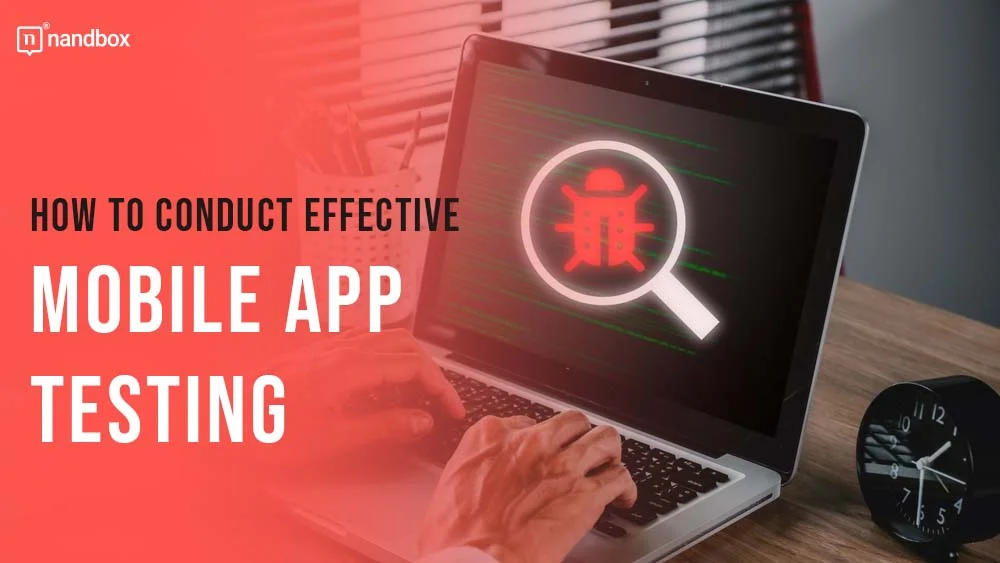You have invested your time and finances into developing an amazing app. It has stunning design features and the potential to change your niche market. But before you release your masterpiece on the app store, there’s one crucial step: mobile application testing. Effective mobile application testing is the secret weapon that ensures your app is polished, functional, and ready to win over users. In this article, you’ll learn everything you need to know about how to do mobile application testing through app testing. Buckle up, put on your quality assurance hat, and dig in!
1. Define Your Testing Objectives
When it comes to testing software, having a clear plan is crucial. Start by pinpointing the main areas that users will interact with the most – things like login, search, and checkout flows. Consider which devices and operating systems your target audience uses, and make sure to test across those platforms.
Next, decide which testing types best suit your needs. Functional testing verifies features work correctly, while usability testing assesses user experience. Load tests measure performance under heavy traffic.
Clear objectives ensure you focus your testing efforts on high-impact areas. It also provides insight into the amount of capital you’ll need to test and launch your app. If you need more finance for this project, contact www.credibly.com or consider getting a loan from other reputable lenders.
2. Create A Testing Strategy
Craft a mobile application testing strategy to make sure your app is functional. The plan should outline what you’ll test, how you’ll do it, and what tools and people you’ll need.
Your test strategy should map out:
- Test cases for crucial features (think signing up, making purchases for mobile applications that handle payments)
- Testing techniques like functional, security, and load testing
- Timeline and milestones
- Tools for emulators, test automation framework, and performance monitoring
Having a thorough strategy keeps your testing focused and catches issues before release. It ensures you pay attention to everything essential and takes the guesswork out of who does what.
For complex apps or limited internal resources, consider engaging an external IT service in your area. For instance, if you operate in Denver, find IT support in Denver specializing in mobile application testing to help create a well-rounded test strategy. They can offer additional expertise, tools, and a fresh perspective on your testing approach.
3. Choose The Right Tools
Testing your app the right way is essential. To do this, you’ll need to have effective testing tools in your arsenal. These include:
Emulators And Simulators
Emulators and simulators let you simulate different phones and tablets on your computer. These tools are super handy for checking basic functionality across iOS, Android, and other mobile platforms.
Performance Testing Tools
Load testing tools like JMeter and LoadRunner stimulate tons of users to hit your app at once. They’re crucial for checking the app’s performance under high traffic.
Automated Testing Frameworks
A mobile test automation framework automates repetitive test cases, so you don’t have to click through everything manually. Test automation tools like Appium work across different mobile Operating Systems (OS), while Espresso (Android) and XCUITest (iOS) are platform-specific options.
Security Testing Tools
Security scanners, such as MobSF, identify vulnerabilities that put user data at risk. With breaches constantly in the news, you must recognize app security. These tools check for common weaknesses so you can lock things down before releasing the app to the public.
The right tool kit ensures your app looks and behaves flawlessly, regardless of the device or scenario. A little upfront investment saves headaches down the line.
4. Set Up The Test Environment
Getting your mobile testing environment dialed in is key. You’ll want a good mix of real devices and emulators that represent what users actually have, from the latest iPhones to Android devices and other models.
Don’t just test on the latest models. If your app doesn’t work on few-year-old budget phones, that’s a huge chunk of your potential market you’re missing out on. Cloud-based mobile platforms give you easy access to an enormous device matrix without the hassle of maintaining an extensive in-house inventory.
The closer you can get to real-world usage conditions, the better. Test on cellular networks, not just WiFi. Account for different locations, carriers, and data plans. You could even pick up a few junkers and put them through some drop mobile application tests! Thorough preparation prevents many headaches down the road when real users start using your app in the wild.
5. Conduct The Test
Test away, but start simple—put that app through thorough manual software testing across different phones and tablets. See how the actual user experience feels. Is anything blatantly broken or confusing? Catch those obvious issues early.
Once you cover the basics, use automated tools to run repetitive mobile app tests severally without wearing out your thumb muscles. Set it and forget it while the test scripts verify core functionality across countless real mobile devices.
Next, examine key features. If your app processes payments, rigorously test checkout flows with diverse data. If it has a matching algorithm, validate results against expectations. Get some fresh outside perspectives. Real people interact with mobile applications differently, so see how new users navigate your app’s flow. Their struggles highlight what needs improvement.
Compatibility testing is also crucial. Put your app through its pace on every phone or tablet you can get your hands on, new and old. Performance testing stimulates maximum capacity so you can see if things grind to a halt with lots of users. Also, security should be airtight, so hunt for any vulnerabilities before releasing them publicly. A complete, multi-faceted testing approach ensures your app is ready for real-world prime time.
6. Report And Fix Bugs
Thorough documentation is vital when testing reveals bugs and issues. Log every problem you encounter, no matter how minor it may seem. Prioritize them based on factors like severity and impact on core functionality.
For example, a crashing bug on the login screen is likely a higher priority than a cosmetic user interface glitch on an information screen. But don’t disregard anything—seemingly trivial issues can spiral into bigger problems if left unchecked.
Throughout the testing process, maintain open lines of communication between teams. Prioritize frequent communication so efforts stay focused on the highest-impact items. With seamless coordination between testing and development, you can efficiently exterminate bugs and release a high-quality, solid app.
7. Perform Regression Testing
Once you fix those bugs, it’s time for regression testing. You don’t want to break something else while fixing one issue. Retest all the app’s core features and user flow thoroughly. If it’s a productivity app, make sure that creating, editing, and sharing files still work flawlessly after fixing that nagging sync bug. For mobile games, verify login, matchmaking, and purchases.
Automation testing tools really help with this process. Regression testing suites can rapidly revalidate every nook and cranny of your app that changes might impact. Rather than painstakingly click through hundreds of steps manually, lean on test scripts to do the heavy lifting. Incorporating test management software can further streamline these processes by organizing and tracking all test cases and results, ensuring nothing is overlooked.
8. Launch And Monitor Performance
After you confirm the app functions perfectly, launch it. However, the work doesn’t stop there. Closely monitor how it performs with actual users. Analytics tools can pinpoint potential trouble spots like sluggish load times or battery drain issues on specific mobile devices.
User feedback, whether in-app reviews or social media, provides another invaluable window into the experience. Be proactive about listening to those real user voices. If a significant number of people are complaining about the same thing, you have a legitimate problem to address.
Don’t get complacent after all your pre-launch testing. Have a process to triage and prioritize emerging issues for hotfixes and updates quickly. The ability to resolve publicly reported bugs and pain points rapidly is what separates the great apps from the also-rans.
Conclusion
Conducting effective mobile applications testing is crucial for delivering a high-quality app that meets user expectations and performs seamlessly across different operating systems and devices. By following the outlined steps and leveraging automated and manual testing methods, you can ensure comprehensive testing and identify potential issues early in the mobile applications development process. Investing in thorough mobile applications testing ultimately leads to a better user experience, higher user satisfaction, and increased success in the competitive app market.







